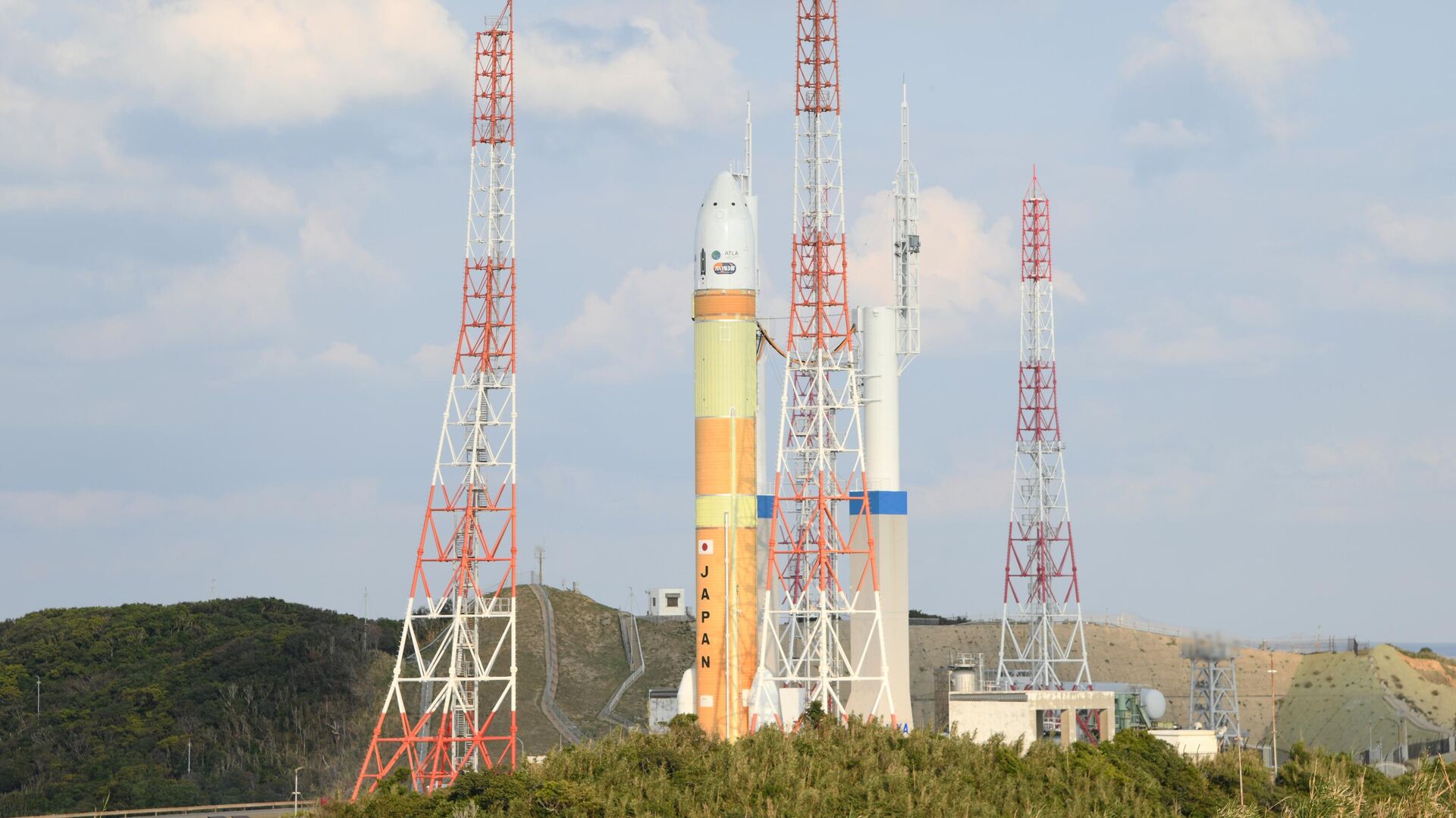https://sputnikglobe.com/20230307/japans-new-flagship-space-rocket-h3-fails-first-test-flight-self-destructs-1108134181.html
Japan’s New Flagship Space Rocket H3 Fails Test Flight, Self-Destructs
Japan’s New Flagship Space Rocket H3 Fails Test Flight, Self-Destructs
Sputnik International
The H3 Rocket is designed to replace JAXA’s current workhorse, the H-IIA rocket. It has been in development by JAXA and its commercial partner, Mitsubishi Heavy Industries, for more than a decade.
2023-03-07T03:32+0000
2023-03-07T03:32+0000
2023-03-07T03:35+0000
science & tech
jaxa
failed test
h3 rocket
japan's aerospace exploration agency (jaxa)
https://cdn1.img.sputnikglobe.com/img/07e7/03/07/1108133705_0:319:3075:2048_1920x0_80_0_0_c0aaaee0b5aaf7b002e6c04d359308e5.jpg
After an aborted attempt last month that never left the launch pad, the Japan Aerospace Exploration Agency tried to launch its new H3 rocket on Tuesday but the rocket again failed to reach Earth’s orbit.This second attempt was more successful than the first, as it got off the ground this time, but the Tanegashima Space Center determined the rocket had “no possibility of achieving the mission” and issued a “destruct command.”The issue seemed to arise sometime between the end of the rocket’s first stage and separation and the rocket’s second stage ignition. According to velocity data provided during JAXA’s livestream of the event, the speed of the rocket started decreasing after shedding its first-stage engines. Had the second-stage engine performed as expected, the rocket should have continued to accelerate.It has not been confirmed by JAXA that the second-stage engine ignition caused the rocket’s failure to reach orbit, but the livestream noted that “the second stage ignition has not been confirmed yet” moments before the order was given to abort the mission.The destruct command typically means the rocket self-destructed, which is often used for failed missions to lessen the chance of falling debris causing damage on the ground. In October, a Japanese Epsilon-6 rocket was given the destruct command after it failed to reach orbit safely.That rocket was the first Epsilon rocket to carry a commercial payload, creating an early black mark for JAXA, which is trying to develop a commercial satellite launch business. The remains of that rocket fell into the ocean east of the Philippines and reportedly caused no damage or injuries.It is unknown at this time where the debris from the H3 rocket landed and JAXA has not commented publicly on the botched launch.The H3’s first launch was planned for February 16 but was aborted after its countdown reached zero. While the rocket’s two main engines did ignite, its two solid rocket boosters did not. The rocket never left the launch pad and remained intact.
Sputnik International
feedback@sputniknews.com
+74956456601
MIA „Rossiya Segodnya“
2023
News
en_EN
Sputnik International
feedback@sputniknews.com
+74956456601
MIA „Rossiya Segodnya“
Sputnik International
feedback@sputniknews.com
+74956456601
MIA „Rossiya Segodnya“
jaxa, japanese aerospace exploration agency, h3 rocket, failure, test flight failure
jaxa, japanese aerospace exploration agency, h3 rocket, failure, test flight failure
Japan’s New Flagship Space Rocket H3 Fails Test Flight, Self-Destructs
03:32 GMT 07.03.2023 (Updated: 03:35 GMT 07.03.2023) The H3 rocket is designed to replace the Japan Aerospace Exploration Agency's (JAXA) current workhorse, the H-IIA rocket. It has been in development by JAXA and its commercial partner, Mitsubishi Heavy Industries, for more than a decade.
After an aborted attempt last month that never left the launch pad, the Japan Aerospace Exploration Agency tried to launch its new H3 rocket on Tuesday but the rocket again failed to reach Earth’s orbit.
This second attempt was more successful than the first, as it got off the ground this time, but the Tanegashima Space Center determined the rocket had “no possibility of achieving the mission” and issued a “destruct command.”
The issue seemed to arise sometime between the end of the rocket’s first stage and separation and the rocket’s second stage ignition. According to velocity data provided during JAXA’s livestream of the event, the speed of the rocket started decreasing after shedding its first-stage engines. Had the second-stage engine performed as expected, the rocket should have continued to accelerate.
It has not been confirmed by JAXA that the second-stage engine ignition caused the rocket’s failure to reach orbit, but the livestream noted that “the second stage ignition has not been confirmed yet” moments before the order was given to abort the mission.
The destruct command typically means the rocket self-destructed, which is often used for failed missions to lessen the chance of falling debris causing damage on the ground. In October, a Japanese Epsilon-6 rocket was given the destruct command after it failed to reach orbit safely.
That rocket was the first Epsilon rocket to carry a commercial payload, creating an early black mark for JAXA, which is trying to develop a commercial satellite launch business. The remains of that rocket fell into the ocean east of the Philippines and reportedly caused no damage or injuries.
It is unknown at this time where the debris from the H3 rocket landed and JAXA has not commented publicly on the botched launch.
The H3’s first launch was planned for February 16 but was aborted after its countdown reached zero. While the rocket’s two main engines did ignite, its two solid rocket boosters did not. The rocket never left the launch pad and remained intact.


